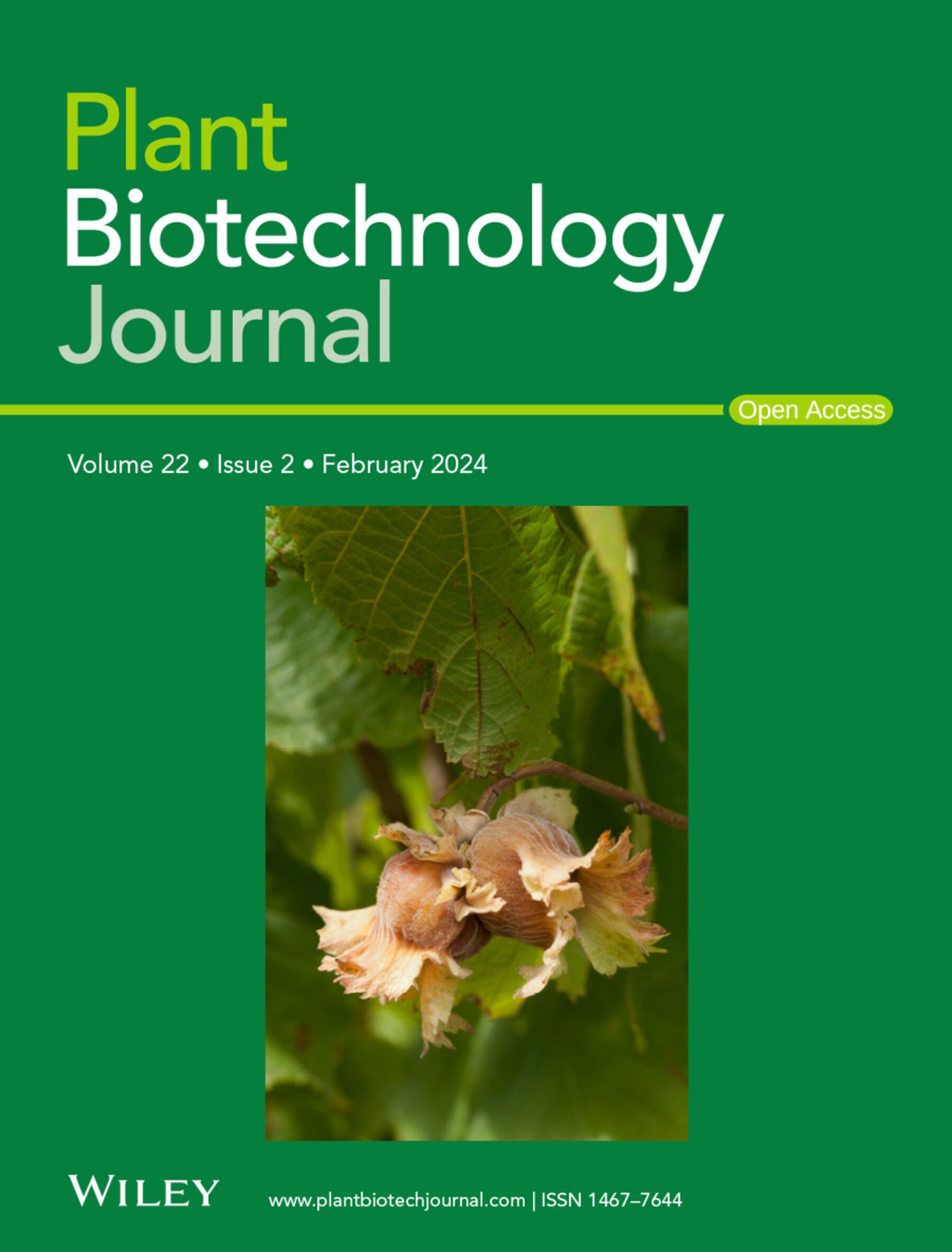Editing cis-elements of OsPHO1;2 improved phosphate transport and yield in rice
IF 10.1
1区 生物学
Q1 BIOTECHNOLOGY & APPLIED MICROBIOLOGY
引用次数: 0
Abstract
Increasing grain yield is the primary goal of crop improvement, which is globally affected by the low availability of soil phosphate (Pi). Overexpressing Pi transporters to enhance Pi uptake often results in Pi toxicity and growth retardation. Despite advances in genetic engineering, targeting the cis-regulatory motifs of Pi transporters remains underexplored for understanding plant mechanisms and improving Pi status. Here, we demonstrate that the excision of the transcription inhibitor motif from the promoter of the Pi transporter OsPHO1;2 enhances its expression and increases root-to-shoot Pi transport, leading to improved grain yield. Through in silico and DNA-protein interaction studies, we show the role of the OsWRKY6 transcription factor in negatively regulating OsPHO1;2 expression by binding to the cis-regulatory element (W-box) present in its promoter. The oswrky6 knockout lines exhibit higher OsPHO1;2 expression and improved shoot Pi levels. Furthermore, we engineered the OsPHO1;2 promoter to precisely remove the W-box and enhance OsPHO1;2 expression. Phenotypic and physiological evaluations at the vegetative stage indicate that OsPHO1;2 promoter-edited (OsPHO1;2:PE) lines have increased shoot length, plant biomass and greater root-to-shoot Pi export under both low and normal P conditions. Notably, the 33P uptake assay reveals that OsPHO1;2:PE lines display enhanced root Pi uptake, supported by higher expression of root-associated Pi transporters (OsPHTs). An extensive agronomic assessment shows that OsPHO1;2:PE lines achieve increased seed and panicle numbers, thereby raising yield without affecting seed quality. Our findings provide valuable insights into the potential of promoter editing to improve Pi use and enhance crop yield.编辑OsPHO1;2顺式元件可改善水稻的磷酸盐运输和产量
提高粮食产量是作物改良的首要目标,这是全球范围内受土壤磷素有效性低的影响。过度表达π转运蛋白以增强π的摄取通常会导致π毒性和生长迟缓。尽管基因工程取得了进展,但针对Pi转运体的顺式调控基序仍未被充分探索,以了解植物机制和改善Pi状态。在这里,我们证明了从Pi转运蛋白OsPHO1;2的启动子中去除转录抑制基序可以增强其表达并增加根到茎的Pi转运,从而提高粮食产量。通过计算机和dna -蛋白相互作用研究,我们发现OsWRKY6转录因子通过与其启动子中的顺式调控元件(W-box)结合,负向调节OsPHO1;2的表达。oswrky6基因敲除系表现出更高的OsPHO1;2表达量和更高的茎部Pi水平。此外,我们设计了OsPHO1;2启动子来精确去除W-box,增强OsPHO1;2的表达。营养阶段的表型和生理评价表明,在低磷和正常磷条件下,OsPHO1;2启动子编辑(OsPHO1;2:PE)系的茎长、植物生物量和根到茎的Pi输出均有所增加。值得注意的是,33P摄取试验显示,OsPHO1;2:PE系在根相关Pi转运蛋白(OsPHTs)的高表达支持下,显示出根Pi摄取增强。一项广泛的农艺评估表明,OsPHO1;2:PE品系可以增加种子和穗数,从而在不影响种子质量的情况下提高产量。我们的发现为启动子编辑在改善Pi使用和提高作物产量方面的潜力提供了有价值的见解。
本文章由计算机程序翻译,如有差异,请以英文原文为准。
求助全文
约1分钟内获得全文
求助全文
来源期刊

Plant Biotechnology Journal
生物-生物工程与应用微生物
CiteScore
20.50
自引率
2.90%
发文量
201
审稿时长
1 months
期刊介绍:
Plant Biotechnology Journal aspires to publish original research and insightful reviews of high impact, authored by prominent researchers in applied plant science. The journal places a special emphasis on molecular plant sciences and their practical applications through plant biotechnology. Our goal is to establish a platform for showcasing significant advances in the field, encompassing curiosity-driven studies with potential applications, strategic research in plant biotechnology, scientific analysis of crucial issues for the beneficial utilization of plant sciences, and assessments of the performance of plant biotechnology products in practical applications.
 求助内容:
求助内容: 应助结果提醒方式:
应助结果提醒方式:


